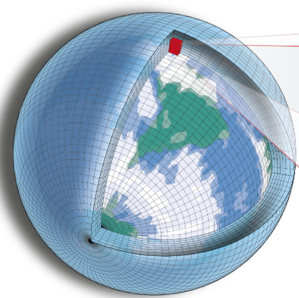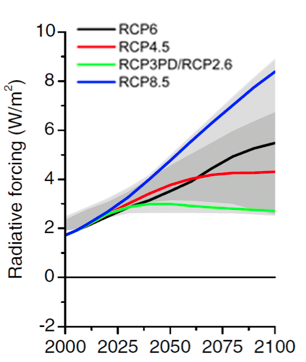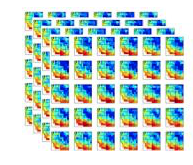The future climate data used here are future projections from 20 climate models and 2 scenarios (RCP 4.5 and 8.5) which were downscaled to a ~4-km resolution over the contiguous US using the MACAv2 statistical method with the gridMET training dataset.
Future Climate Models
The 20 climate model projections utilized are from phase 5 of the Coupled Model Intercomparison Project(CMIP5) from the Intergovernmental Panel on Climate Change (IPCC) . These models are run by climate modeling agencies from different countries all over the world and represent the best science for climate modeling.

Future Climate Scenarios
The CMIP5 models ran future projections utilizing future scenarios in terms of Representative Concentration Pathways (RCPs). The "High Emissions Scenario (RCP 8.5)" represents a future pathway similar to a business-as-usual continuation of our emissions back in 2010. The "Low Emissions Scenario (RCP 4.5)" considers a curtailment in greenhouse gas emissions through greenhouse gas mitigation efforts.

IPCC Info on Climate Scenarios
Statistical Downscaling
The CMIP5 model outputs were statistically downscaled using the Multivariate Adaptive Constructed Analogs (MACA) method version 2 with the gridMET training dataset. This method removes biases and increases the resolution of the model outputs.

More Info on Climate Downscaling